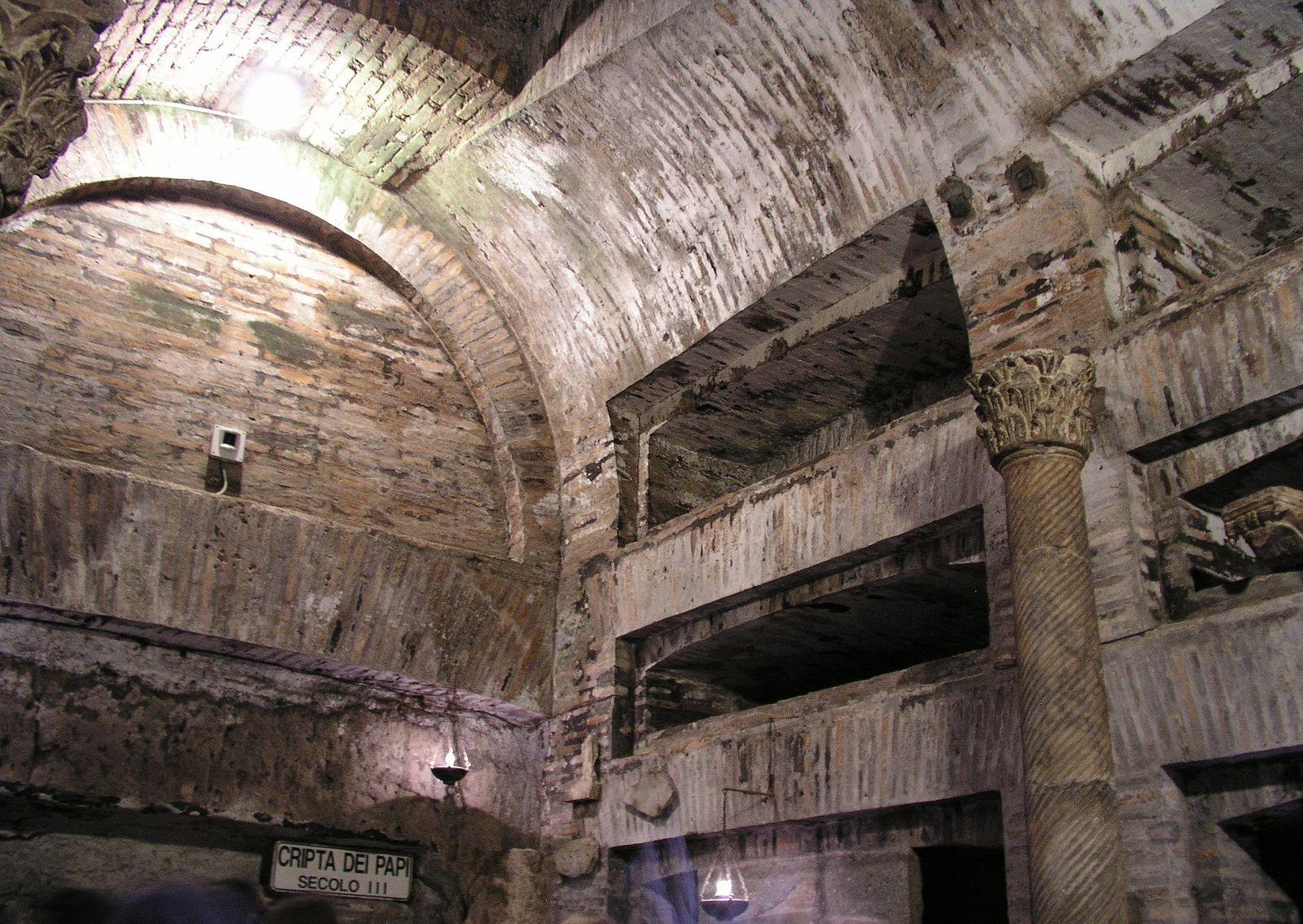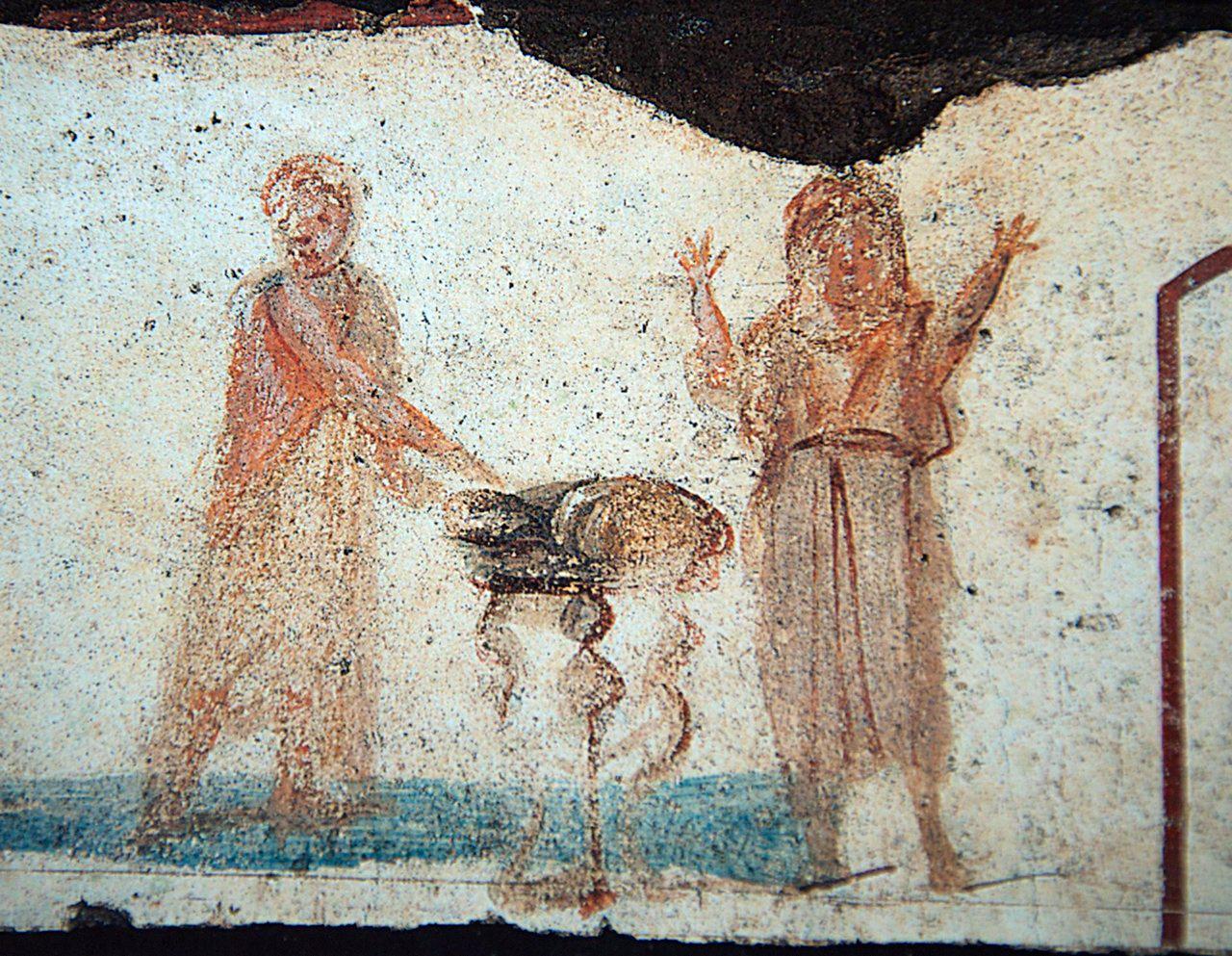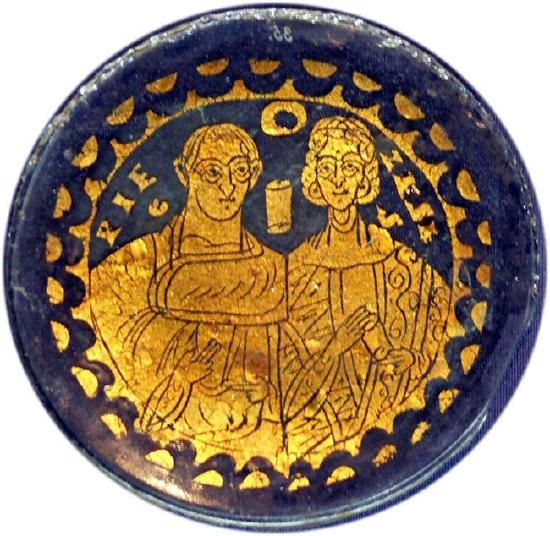6.2: Late Roman Empire (3rd C – 6th C)
- Page ID
- 31828
One of the most powerful empires to date was the Roman Empire, at one period, ruling the entire Mediterranean Sea. Pagan power and religion shaped this passionate empire, and at the waning end of their reign, Christianity began to absorb the citizens, creating important religious centers. The Romans were known as engineering masters, and many of the buildings, aqueducts, sewers, and coliseums used through the late Roman Period. As mighty as the Romans ruled for centuries, they also beginning to collapse.

During the establishment of Christianity, the catacombs became the perfect hiding places for the icons and paintings of the new religion. Several catacombs (6.1) throughout Italy were underground burial sites Jews followed by the growing Christian population beginning in the 3rd century. Romans generally were cremated, their ashes stored in urns. As inhumation became fashionable, catacombs were carved in the soft tufo rock underground. Both Jews and Christians found the tunnels useful for burial and a place to display religious artwork and later religious ceremonies.
In the tombs, art was a fresco style combined with a layer of mosaics, a long-used art process. The catacombs were the birthplace of iconic religious symbols (6.2) as the simple image of the ceremony for eucharist bread, evolving into art in grand cathedrals later in the millennium. Gold glass (6.3) was another typical decoration and frequently used as grave markers. The highly decorated glasses and drinking vessels used gold leaf between layers of glass. When the person was deceased, the gold image was cut from the glass and used to identify the person grave.


There are many reasons why the Roman Empire collapsed, one theory when the capitol of Rome moved to Byzantine (Constantinople), the position and status of Rome weakened, and multiple outside invasions hastened the decline. The Romans controlled a vast land holding, one that was difficult to protect, and the clash between paganism and Christianity also proved catastrophic, especially when the leader Constantine I converted to Christianity.


